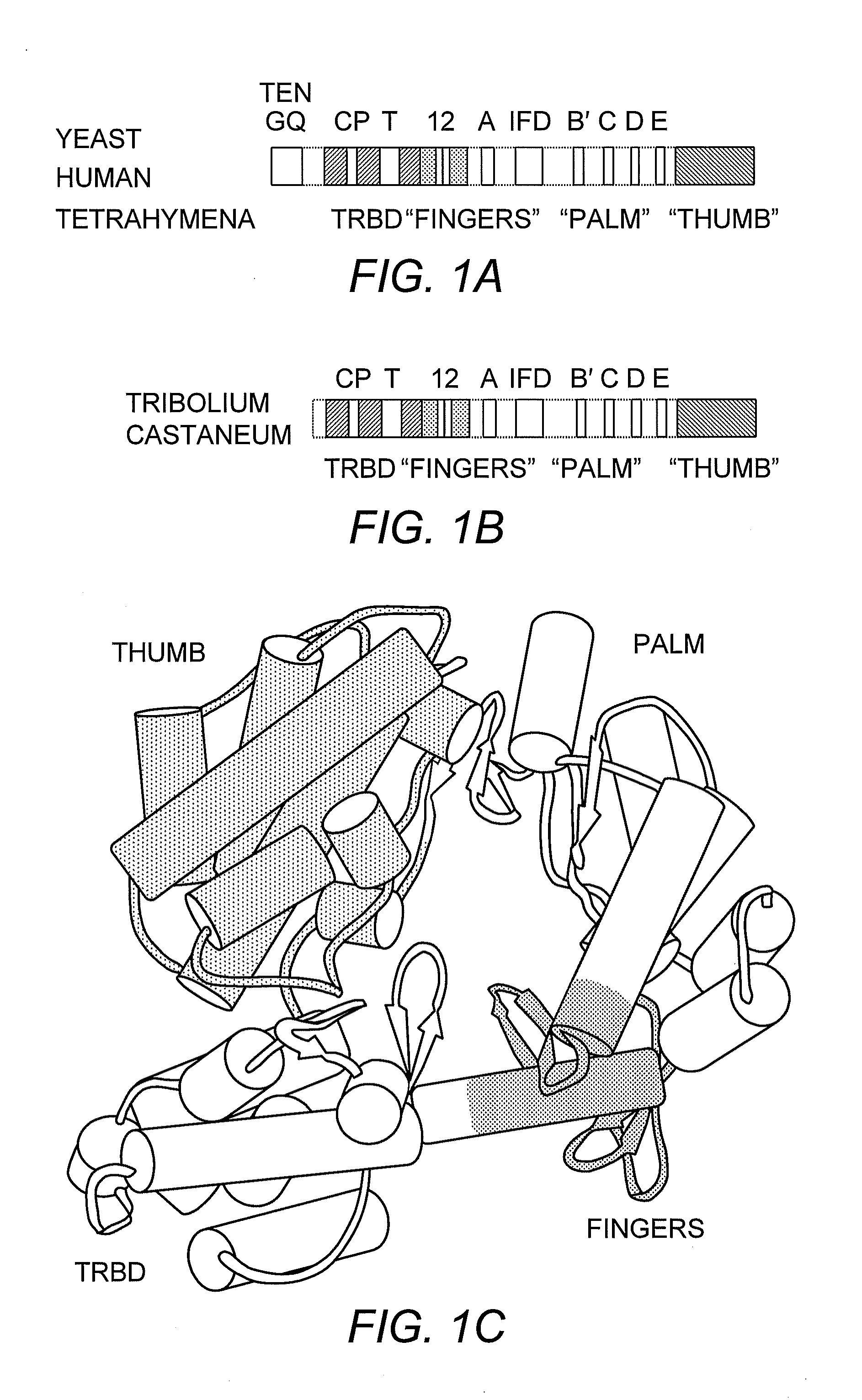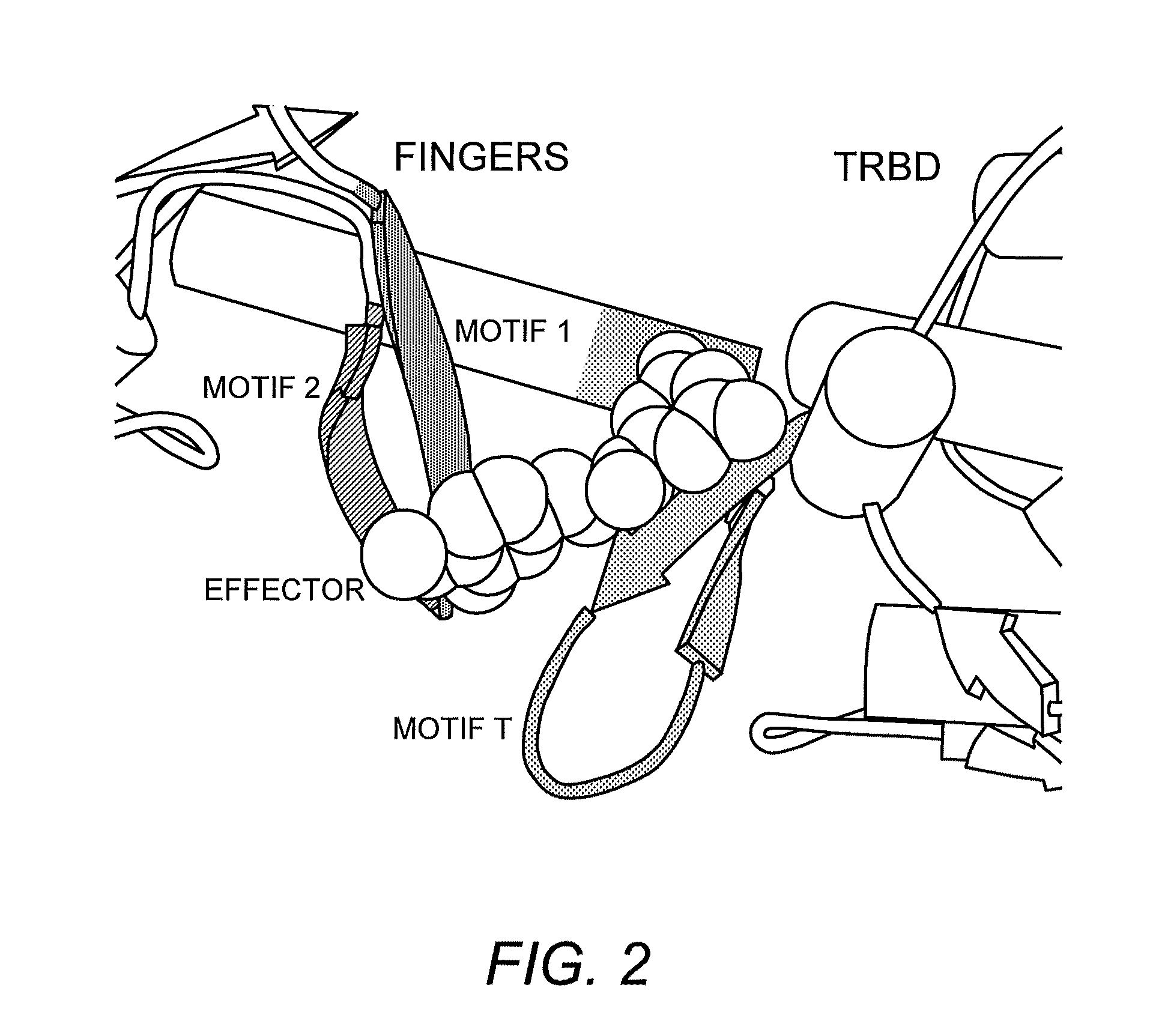TRBD-Binding Effectors and Methods for Using the Same to Modulate Telomerase Activity
a technology of telomerase activity and effector, which is applied in the field of telomerase activity modulation by telomerase, can solve the problems of not focusing on identifying agents with specificity for particular domains or substrate pockets, and achieve the effect of preventing or treating disease or disorder, and stimulating telomerase activity
- Summary
- Abstract
- Description
- Claims
- Application Information
AI Technical Summary
Benefits of technology
Problems solved by technology
Method used
Image
Examples
example 1
Structure of Tetrahymena thermophila TERT
[0041]Protein Expression and Purification. The T. thermophila TERT residues 254-519 was identified by limited proteolysis and cloned into a modified version of the pET28b vector containing a cleavable hexa-histidine tag at its N-terminus. The protein was over-expressed in E. coli BL21 (pLysS) at 20° C. for 4 hours. The cells were lysed by sonication in 50 mM Tris-HCl, 10% glycerol, 0.5 M KCl, 5 mM β-mercaptoethanol, and 1 mM PMSF, pH 7.5 on ice. The protein was first purified over a Ni-NTA column followed by TEV cleavage of the hexa-histidine tag overnight at 4° C. The TRBD / TEV mix was diluted so that the concentration of imidazole was at 15 mM and the protein mix was passed over a Ni-NTA column to remove the TEV, the cleaved tag and any tagged protein. The Ni-NTA flow through was concentrated to 1 ml and diluted to a salt concentration of 0.15 M. The diluted TRBD sample was then passed over a POROS-HS column (PerSeptive Biosystems, Framingha...
example 2
Efficacy of Telomerase Inhibitors
[0055]Novel telomerase inhibitors of the instant invention can be analyzed in a variety of systems. The compounds can be assessed in defined well-known model systems used to assess cellular permeability, toxicity, and pharmacodynamic effects. These assays include both cell-based and animal based assays.
[0056]Cell-Based Assay. Cells from a P388 cell line (CellGate, Inc., Sunnyvale, Calif.) or human malignant melanoma cell line SK-MEL-2 are grown in RPMI 1640 cell medium containing fetal calf serum (10%), L-glutamine, penicillin, streptomycin and are split twice weekly. All compounds are first diluted with DMSO. Later serial dilutions are done with a phosphate-buffered saline solution. All dilutions are done in glass vials and the final DMSO concentration is generally below 0.5% by volume. Final two-fold dilutions are done in a 96-well plate using cell media so that each well contains 50 μL. All compounds are assayed over multiple concentrations. Cell ...
PUM
 Login to View More
Login to View More Abstract
Description
Claims
Application Information
 Login to View More
Login to View More - R&D Engineer
- R&D Manager
- IP Professional
- Industry Leading Data Capabilities
- Powerful AI technology
- Patent DNA Extraction
Browse by: Latest US Patents, China's latest patents, Technical Efficacy Thesaurus, Application Domain, Technology Topic, Popular Technical Reports.
© 2024 PatSnap. All rights reserved.Legal|Privacy policy|Modern Slavery Act Transparency Statement|Sitemap|About US| Contact US: help@patsnap.com










